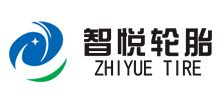News
The Ultimate Comparison: 10x2 Inch Rubber Solid Wheels vs. Traditional Tires
Release time:
2025-07-25 15:40
The Ultimate Comparison: 10x2 Inch Rubber Solid Wheels vs. Traditional Tires
Table of Contents
1. Introduction to Wheel Technology
2. Understanding 10x2 Inch Rubber Solid Wheels
3. Advantages of 10x2 Inch Rubber Solid Wheels
4. Disadvantages of 10x2 Inch Rubber Solid Wheels
5. Overview of Traditional Tires
6. Advantages of Traditional Tires
7. Disadvantages of Traditio
The Ultimate Comparison: 10x2 Inch Rubber Solid Wheels vs. Traditional Tires
Table of Contents
- 1. Introduction to Wheel Technology
- 2. Understanding 10x2 Inch Rubber Solid Wheels
- 3. Advantages of 10x2 Inch Rubber Solid Wheels
- 4. Disadvantages of 10x2 Inch Rubber Solid Wheels
- 5. Overview of Traditional Tires
- 6. Advantages of Traditional Tires
- 7. Disadvantages of Traditional Tires
- 8. Applications of 10x2 Inch Rubber Solid Wheels vs. Traditional Tires
- 9. Cost Comparison: Solid Wheels vs. Traditional Tires
- 10. Conclusion: Making the Right Choice
- 11. Frequently Asked Questions
1. Introduction to Wheel Technology
As technology advances, so too does the world of wheel engineering. The choice between **10x2 inch rubber solid wheels** and **traditional tires** can significantly impact performance, mobility, and maintenance. Understanding these options is crucial for anyone involved in the automotive or machinery industries. This article presents a thorough comparison, elucidating the specifics so you can make an informed decision tailored to your needs.
2. Understanding 10x2 Inch Rubber Solid Wheels
10x2 inch rubber solid wheels are engineered from high-quality rubber compounds, designed to provide maximum durability and minimal maintenance. Unlike traditional tires, these wheels lack an air-filled cavity, making them resistant to punctures and flats. They are typically utilized in various applications ranging from **hand trucks** to **mobility scooters**, showcasing their versatility and reliability.
Construction and Design
The construction of 10x2 inch rubber solid wheels involves a solid rubber core that ensures strength and longevity. The design may include treads for enhanced traction, particularly in indoor or outdoor environments. This solid structure leads to consistent performance without the need for inflation or regular maintenance typically associated with traditional tires.
3. Advantages of 10x2 Inch Rubber Solid Wheels
**Durability** is one of the standout features of 10x2 inch rubber solid wheels. Their robust construction makes them resistant to wear and tear, ensuring longevity even under heavy use. Here are some key advantages:
Puncture-Proof
One of the most significant benefits is that these wheels are puncture-proof. Users no longer have to worry about flat tires during critical operations, which saves time and enhances productivity.
Minimal Maintenance
Solid wheels require little to no maintenance compared to traditional tires. There’s no need for regular inflation checks or tire rotations, making them a convenient choice for busy operations.
Consistent Performance
These wheels provide consistent performance across various surfaces, ensuring smooth movement regardless of terrain. Their design helps maintain stability and control, making them ideal for equipment that requires precision.
4. Disadvantages of 10x2 Inch Rubber Solid Wheels
While there are many advantages, it’s essential to consider some of the downsides associated with 10x2 inch rubber solid wheels:
Limited Shock Absorption
Unlike traditional tires, solid wheels offer limited shock absorption. This feature can lead to a harsher ride, especially on uneven surfaces, which may not be suitable for all applications.
Weight Considerations
Solid rubber wheels can sometimes be heavier than their inflatable counterparts, which may affect maneuverability, particularly in portable equipment.
5. Overview of Traditional Tires
Traditional tires, typically made with rubber and filled with air, have been a staple in vehicle and machinery design for decades. They come in various designs, including **all-terrain** and **performance tires**, allowing for specialized applications.
Construction and Design
Traditional tires comprise multiple layers, including tread, sidewall, and inner liner, providing flexibility and cushioning. The air-filled structure allows for better shock absorption, enhancing comfort during operation.
6. Advantages of Traditional Tires
Traditional tires boast several advantages that make them appealing in various contexts:
Superior Comfort and Shock Absorption
The air-filled nature of traditional tires allows for superior shock absorption, ensuring a more comfortable ride, especially on uneven surfaces.
Variety of Options
With numerous styles and sizes available, traditional tires can be tailored to specific performance needs, from rugged terrains to urban environments.
Better Traction
Traditional tires often feature advanced tread designs that enhance traction in various conditions, providing improved handling and control.
7. Disadvantages of Traditional Tires
Despite their advantages, traditional tires do come with some drawbacks:
Puncture Risks
Being air-filled, traditional tires are susceptible to punctures and flats, which can lead to downtime and increased maintenance costs.
Higher Maintenance Needs
Regular maintenance is essential to keep traditional tires in optimal condition, including inflation checks and tread wear assessments.
8. Applications of 10x2 Inch Rubber Solid Wheels vs. Traditional Tires
Understanding where each type of wheel excels helps in selecting the right option for specific applications.
Applications for 10x2 Inch Rubber Solid Wheels
- **Hand Trucks**: Ideal for transporting goods without the risk of flats.
- **Mobility Scooters**: Ensuring safety and reliability for users.
- **Industrial Equipment**: Suitable for environments where durability is paramount.
Applications for Traditional Tires
- **Cars and Trucks**: Essential for personal and commercial vehicles where comfort and handling are prioritized.
- **Off-Road Vehicles**: Designed for rugged terrains where traction is crucial.
- **Bicycles**: Offering a variety of options tailored for different riding styles.
9. Cost Comparison: Solid Wheels vs. Traditional Tires
Cost is often a deciding factor when choosing between 10x2 inch rubber solid wheels and traditional tires. While the initial purchase price of solid wheels may be higher, the long-term savings in maintenance and replacements often make them a more economical choice.
Initial Investment
- 10x2 inch rubber solid wheels generally have a higher upfront cost due to their robust construction.
- Traditional tires can be cheaper initially, but the costs can accumulate due to maintenance and replacements.
Long-Term Savings
- Solid wheels often provide a lower total cost of ownership over time, given their durability and minimal maintenance needs.
- Traditional tires may require frequent replacements and maintenance checks, leading to higher lifetime costs.
10. Conclusion: Making the Right Choice
In the debate between **10x2 inch rubber solid wheels** and **traditional tires**, the right choice hinges on your specific needs and applications. Solid wheels excel in durability and maintenance-free operation, while traditional tires offer superior comfort and traction.
Ultimately, evaluating your usage context, maintenance preferences, and cost considerations will guide you in making the best decision for your driving system needs. Whether you prioritize reliability or comfort, understanding these options ensures a more informed purchase.
11. Frequently Asked Questions
1. Are 10x2 inch rubber solid wheels suitable for outdoor use?
Yes, they are designed for both indoor and outdoor applications, providing durability in various environments.
2. How do solid wheels compare to traditional tires in terms of weight?
Solid wheels tend to be heavier than traditional tires due to their robust construction.
3. Can solid wheels be used on all types of surfaces?
While solid wheels perform well on many surfaces, their limited shock absorption may not be ideal for extremely rough terrains.
4. How often should traditional tires be checked for maintenance?
Regular checks are recommended every month, including inspections for air pressure, tread wear, and any visible damage.
5. What are the best applications for traditional tires?
Traditional tires are best suited for vehicles that require comfort and high traction, such as cars, trucks, and off-road vehicles.
10x2 inch rubber solid wheel



